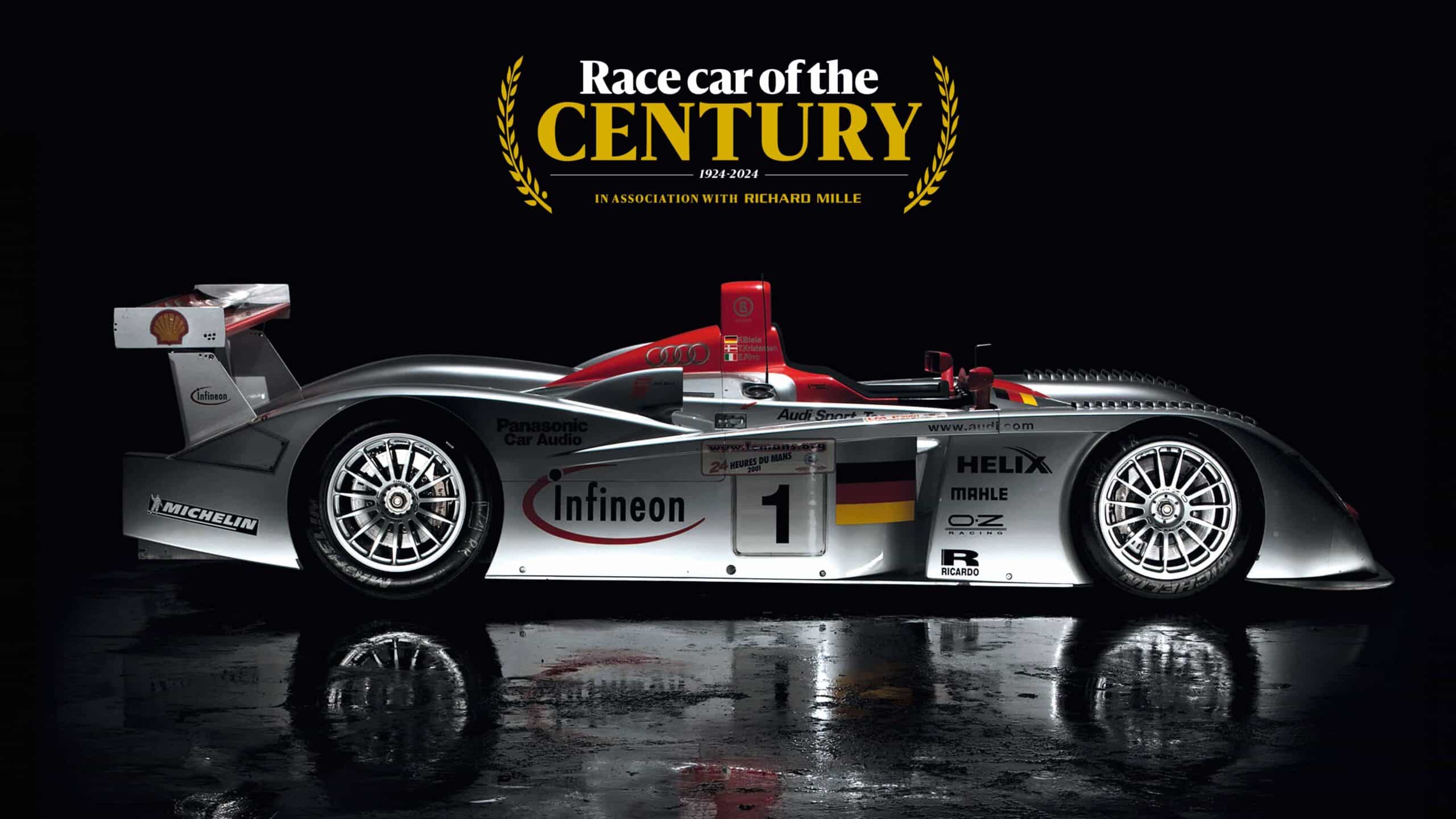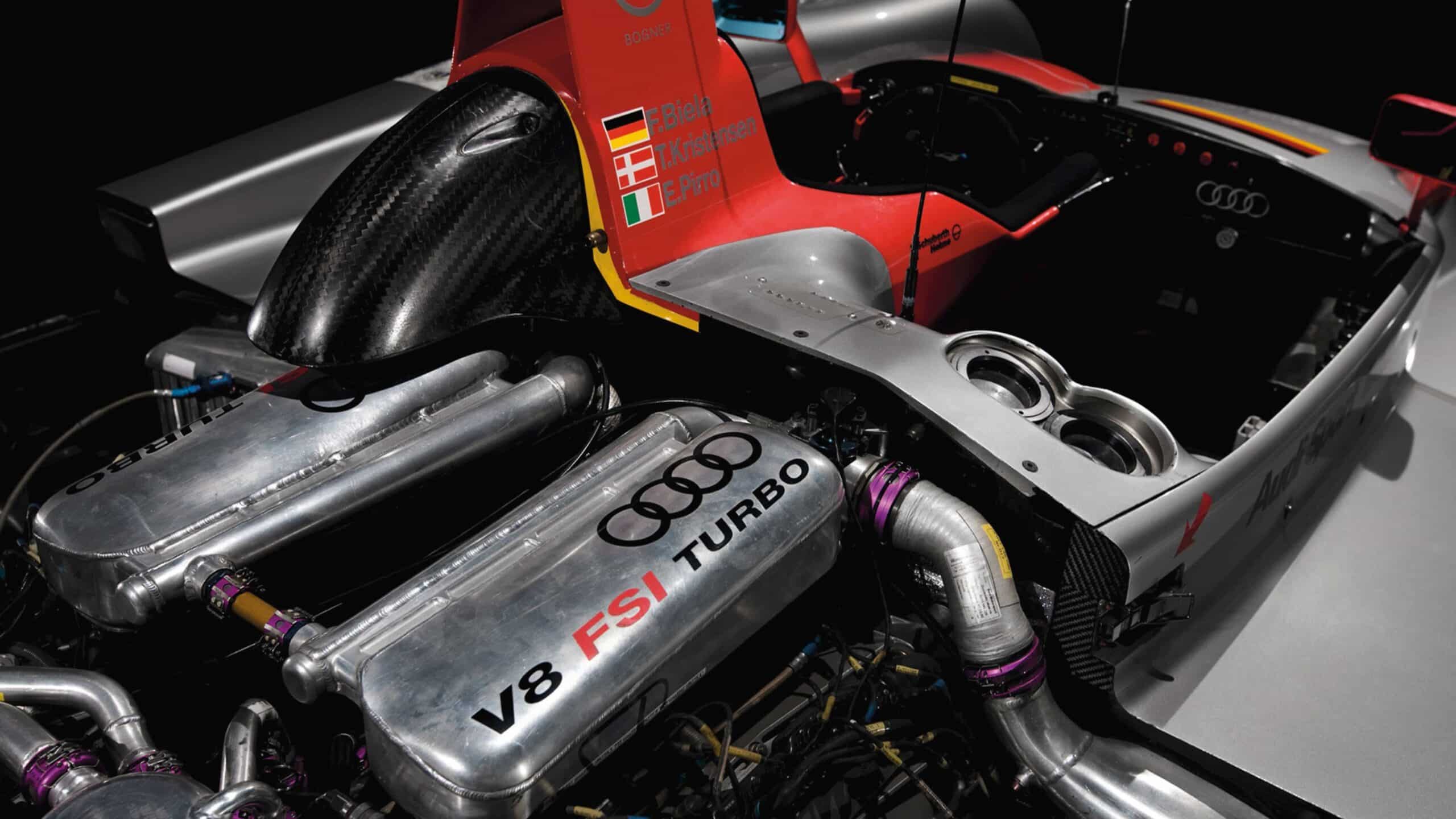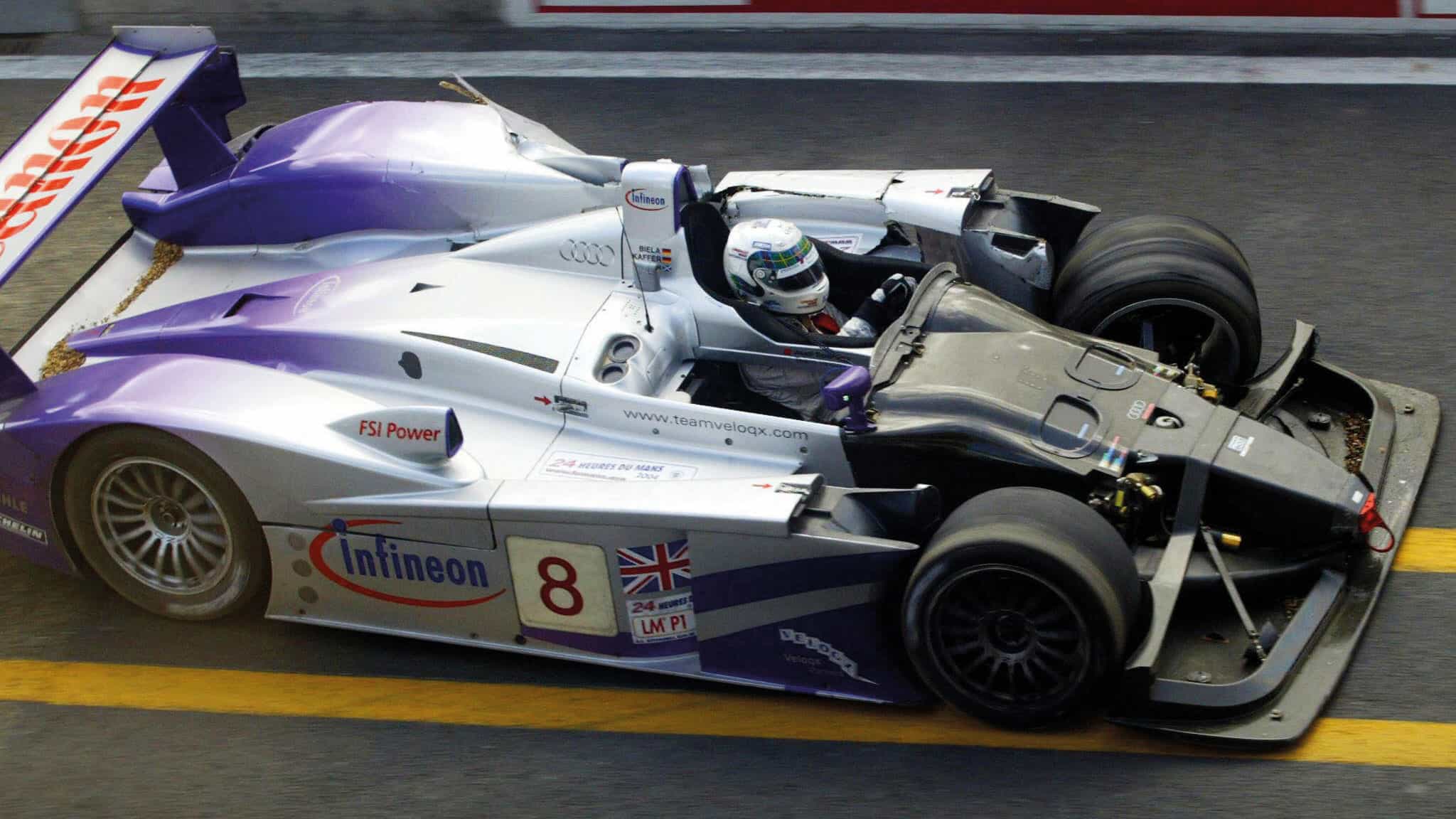Audi R8: The car that changed endurance racing forever
Regardless of which side of the Atlantic it raced, in the early 00s Audi’s R8 was enduro’s big-hitter, as Gary Watkins explains

The names on the car – F Biela, T Kristensen, E Pirro – would become synonymous with Audi’s endurance success.
Audi AG
Voting has now closed in our Race Car of the Century poll and the winner will be announced later this summer. Sign up to our Archive newsletter and you’ll be among the first to be notified.
9 2000s Audi R8
Wolfgang Appel, chief designer on the Audi R8 Le Mans Prototype, used to joke that work started on the car the morning after its predecessors failed to challenge the frontrunners at the 1999 Le Mans 24 Hours. The reality was it was already on the drawing board by the time the respective performances of the R8R and R8C — one a roadster, the other a coupé as their nomenclature suggests — had confirmed that the German manufacturer had fallen short at the first time of asking. But boy, did Appel and his team put that right.
The R8 triumphed at Le Mans five times in six attempts between 2000 and 2005, and won six out of six at the Sebring 12 Hours. It ended its career with a total of 63 victories from 80 starts, a hit rate of 79%. Those wins inevitably resulted in end-of-season silverware to further clutter the trophy cabinet. R8 drivers claimed the American Le Mans Series in all six of the design’s full seasons, and there were a couple more titles to boot in the European Le Mans Series and Le Mans Endurance Series.

The much-respected V8 ‘FSI’
Audi AG
It racked up these successes with both the works Joest Racing team and independents, the likes of Champion, Team Goh and Veloqx. The R8 was easy, if expensive to run: the thing came with a manual stretching to hundreds of pages. The factory, however, was always closely involved in the pursuits of the privateers, the customers never let too far off the leash.
They got their chance because the career of the R8 extended far beyond the intended three seasons. A replacement planned for 2003 never arrived and wasn’t really needed. Audi could continue winning almost at will because its LMP was just a bloody good racing car to start with, and one that only got better. A key development, the introduction of a direct-injection ‘FSI’ version of its 3.6-litre twin-turbo V8 in 2001, was central in frightening off the opposition. Cadillac, for example, left the fray because it knew it couldn’t compete with Audi on fuel economy.
But the legacy of the R8 stretches beyond a tally of wins that continued into 2006 before the full-time arrival of the R10 TDI turbodiesel. So good was the R8 that it precipitated a change of regulations. The car, built for a class known as LMP900 before a name alteration to LMP1 in 2005, set new standards for serviceability and what Audi Sport boss Wolfgang Ullrich liked to call “repairability”.

Le Mans, 2000 – a watershed moment for endurance racing with an Audi 1-2-3
Audi AG
Who can forget two R8s crabbing back to the pits at Le Mans in 2004 after going off on oil into the Porsche Curves in what looked like choreographed unison. Both returned to the track after repairs, though the impact was sufficient to prevent Allan McNish from getting back behind the wheel.
Its modular design allowed for a change of the complete rear end — gearbox, suspension and ancillaries — in barely five minutes, a practice that would eventually be banned. Today a car competing at Le Mans and beyond must retain the gearbox casing with which it started the race. But the serviceability that was pioneered on the R8 is now the norm in international sports car racing, not just for Prototypes but down into the GT ranks as well.
Another regulation change followed the lead the R8 set in terms of safety. It was the first Prototype to be fitted with Formula 1-style head restraints that cocooned the driver’s upper body. Very quickly the idea was adopted by the rule makers.
The R8 also altered the landscape of international sports car racing in the broadest of terms. It was a machine designed to be driven flat out for every single corner and every straight of every lap, twice around the clock if necessary. It was during the reign of the car that Le Mans became a 24-hour sprint. Audi’s all-conquering Prototype changed the face of endurance once and for all.

Despite Allan McNish’s crash at Le Mans in 2004, the R8 raced on after repairs
The R8 made driver reputations, too. The legend of Tom Kristensen is at least partially built on his successes aboard the R8, a Le Mans hat-trick with Emanuele Pirro and Frank Biela in 2000-02 included. Five of his record nine victories in the 24 Hours came aboard the R8.
The R8 LMP’s place is enshrined in the history books by hard race results, but it also has a special place in the hearts of those who drove it.
“It was such a driver-friendly car that it never stressed you,” says Pirro, who reckons he never spun an R8. “I went off the track, but I’m sure I had not one spin.”
MS verdict: Easy to drive, reliable, good on fuel and a cinch to repair, Audi’s LMP1 racer altered the sport’s landscape.
